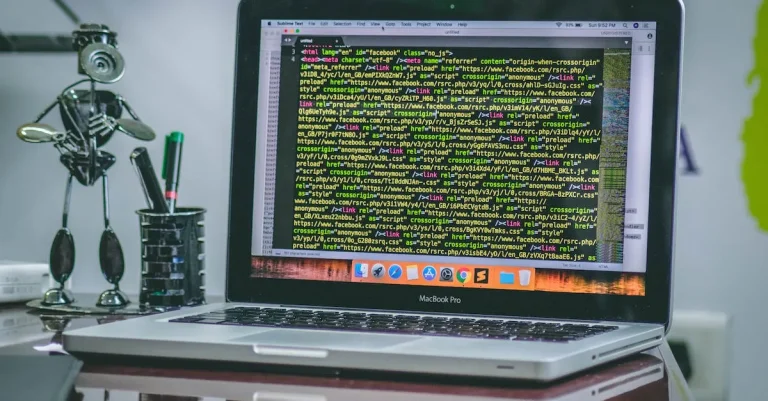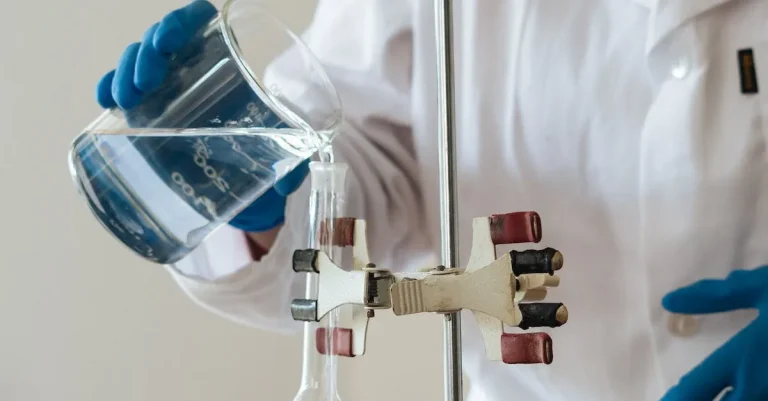What Is A Responding Variable In Science?
Understanding the role of variables is key to conducting science experiments and interpreting results. Specifically, identifying the responding variable provides insight into how and why changes occur during an investigation.
If you’re short on time, here’s a quick answer to your question: A responding variable, also called a dependent variable, is the factor that is observed and measured for changes in response to manipulation of other variables.
Definition of a Responding Variable
A responding variable, also known as a dependent variable, is a key concept in scientific experiments and research. It refers to the factor or phenomenon that is being measured or observed in response to changes in other variables.
In simpler terms, it is the outcome or result that is being studied or analyzed.
Changes in Response to Other Factors
A responding variable is influenced by independent variables, which are the factors that are deliberately manipulated or changed in an experiment. These independent variables are controlled by the researcher and are believed to have an effect on the responding variable.
By altering the independent variables, researchers can study how they impact the responding variable and draw conclusions about cause and effect relationships.
For example, in a study investigating the effect of different fertilizers on plant growth, the responding variable would be the height or health of the plants. The independent variable would be the type of fertilizer used.
By comparing the growth of plants treated with different fertilizers, researchers can determine which fertilizer yields the best results.
Also Known as Dependent Variable
The term “responding variable” is often used interchangeably with “dependent variable.” This is because the responding variable is dependent on the changes in the independent variable. In other words, the value or outcome of the responding variable depends on the values of the independent variable.
Understanding the relationship between the independent and dependent variables is crucial in scientific research. It allows researchers to make predictions, test hypotheses, and draw conclusions based on the observed data.
Typically the Outcome Measured
In most scientific experiments, the responding variable is the primary focus of measurement and analysis. It is the variable that researchers are interested in understanding, and it is often the basis for drawing conclusions and making decisions.
For example, in a study investigating the effectiveness of a new drug in treating a specific condition, the responding variable would be the improvement in the symptoms or the recovery rate of the patients.
The independent variable would be the administration of the new drug compared to a control group receiving a placebo. By comparing the outcomes between the two groups, researchers can determine the effectiveness of the drug.
Relationship with Predictor Variables
In scientific experiments, the responding variable is the outcome or result that is being measured or observed. It is often influenced by one or more predictor variables, also known as independent variables.
The relationship between the responding variable and the predictor variables is crucial in understanding the cause and effect in scientific studies. By manipulating the predictor variables, scientists can observe the changes in the responding variable and draw conclusions about the relationship between them.
Influence of Independent Variables
The predictor variables have a direct impact on the responding variable. They are the variables that the scientist intentionally changes or manipulates in an experiment. For example, in a study investigating the effect of temperature on plant growth, temperature would be the predictor variable.
By altering the temperature, the scientist can observe how it affects the responding variable, which could be the height or number of leaves on the plants. This relationship allows scientists to understand how different factors influence the outcome of an experiment.
Determining Cause and Effect
Understanding the relationship between the responding variable and the predictor variables is essential in determining cause and effect. By carefully controlling and manipulating the predictor variables, scientists can establish a cause-and-effect relationship between them and the responding variable.
This is done through experimental design, where one or more predictor variables are systematically changed while keeping all other factors constant. This allows scientists to confidently attribute any observed changes in the responding variable to the manipulation of the predictor variables.
Controlled vs. Uncontrolled Variables
When conducting experiments, it is crucial to distinguish between controlled variables and uncontrolled variables. Controlled variables are the factors that are kept constant throughout the experiment to ensure that they do not influence the responding variable.
On the other hand, uncontrolled variables are the factors that are not intentionally manipulated but may still have an impact on the responding variable. It is important for scientists to be aware of these uncontrolled variables and try to minimize their influence as much as possible to ensure the validity and reliability of their results.
Characteristics of Responding Variables
Can Be Quantitative or Qualitative
A responding variable in science can be either quantitative or qualitative, depending on the nature of the research being conducted. Quantitative variables are those that can be measured and expressed numerically, such as height, weight, or temperature.
On the other hand, qualitative variables are descriptive in nature and cannot be easily measured or expressed numerically. For example, the color of a flower or the taste of a food item are qualitative variables.
It is important to note that both quantitative and qualitative variables have their own significance in scientific research. While quantitative variables provide numerical data that can be analyzed statistically, qualitative variables offer valuable insights that may not be captured through numerical measurements alone.
Should Be Measurable
A key characteristic of a responding variable is that it should be measurable. This means that it should be possible to observe and record changes in the variable over the course of an experiment. Measurability allows scientists to gather data and draw meaningful conclusions from their research.
For example, if the research question is focused on the effect of temperature on plant growth, the height of the plants can be measured as a responding variable. By measuring the height of the plants at regular intervals and comparing them across different temperature conditions, scientists can determine the impact of temperature on plant growth.
Depends on Research Question
The choice of a responding variable in a scientific experiment depends on the research question being addressed. The responding variable is often the outcome or result that is being studied or observed in response to changes in the independent variable.
For instance, if the research question is investigating the effect of different types of fertilizer on crop yield, the crop yield would be the responding variable. By comparing the crop yield across different types of fertilizer, scientists can determine which fertilizer is most effective in promoting higher yields.
In some cases, multiple responding variables may be used to provide a more comprehensive understanding of the research question. This allows scientists to gather a range of data and analyze various aspects of the experiment.
Examples in Different Fields
Biology and Healthcare Research
In biology and healthcare research, a responding variable is often used to measure the effect of certain treatments or interventions on living organisms. For example, in a study on the effectiveness of a new medication for treating a specific disease, the responding variable could be the improvement in symptoms experienced by the patients.
Researchers would measure the responding variable by tracking the changes in the patients’ symptoms over a period of time, comparing them to a control group that received a placebo or standard treatment.
Furthermore, in genetics research, the responding variable could be the expression of a specific gene after exposure to certain environmental factors. Scientists would measure the responding variable by quantifying the levels of gene expression using techniques like polymerase chain reaction (PCR) or gene sequencing.
This data can then be analyzed to determine the impact of the environmental factors on gene expression.
Chemistry and Physics Experiments
In chemistry and physics experiments, a responding variable is used to measure the changes or effects caused by manipulating certain variables. For example, in a chemical reaction experiment, the responding variable could be the temperature change observed during the reaction.
By varying the concentration of reactants or the reaction conditions, scientists can observe how these changes affect the responding variable (temperature) and draw conclusions about the reaction kinetics or the nature of the substances involved.
In physics experiments, responding variables can be diverse, ranging from the displacement of an object under the influence of different forces to the intensity of light emitted by a source under varying conditions.
For instance, in an experiment to study the relationship between force and acceleration, the responding variable would be the acceleration experienced by an object when different forces are applied. By measuring and analyzing the responding variable, scientists can derive mathematical equations and principles that govern the behavior of objects in motion.
Social Science and Psychology Studies
In social science and psychology studies, responding variables are used to measure the impact of different factors on human behavior, attitudes, or perceptions. For example, in a study on the effects of social media on self-esteem, the responding variable could be the participants’ self-esteem scores before and after using social media platforms.
Researchers would use standardized self-esteem questionnaires to measure the responding variable and analyze the data to determine the influence of social media on self-esteem.
Moreover, in psychology experiments, responding variables can include measures of cognitive performance, emotional responses, or behavioral changes. For instance, in a study on the effects of music on mood, the responding variable could be the participants’ self-reported mood ratings after listening to different genres of music.
By comparing the responding variable across different conditions, researchers can draw conclusions about the impact of music on mood.
For further reading and examples related to responding variables in different fields, you can visit ScienceDirect and PubMed.
Designing Experiments with Responding Variables
Identifying the Research Question
When designing an experiment, it is essential to start by identifying a clear research question. This question should be focused and specific, as it will determine the purpose of the experiment. For example, a researcher might be interested in investigating the effect of different fertilizers on plant growth.
The research question in this case would be: “How do different types of fertilizers affect plant growth?”
Selecting What to Measure
Once the research question has been identified, the next step is to select the responding variable or variables. A responding variable is the characteristic or property that is measured or observed in an experiment.
In the example of the fertilizer experiment, the responding variable would be plant growth. To measure this, the researcher could record the height of the plants or the number of leaves they produce.
It is important to choose responding variables that are relevant to the research question and can provide meaningful data. By selecting appropriate responding variables, researchers can obtain accurate results that address their research question effectively.
Controlling Extraneous Variables
When designing an experiment, it is crucial to control extraneous variables. These variables are factors that could potentially influence the results of the experiment, but are not the main focus of the research question.
By controlling extraneous variables, researchers can ensure that any observed effects are truly caused by the manipulated variable and not by other factors.
For example, in the fertilizer experiment, the researcher would need to control variables such as the amount of sunlight, temperature, and water given to the plants. By keeping these factors constant, the researcher can be more confident that any differences in plant growth are due to the different types of fertilizers used.
Controlling extraneous variables can be challenging, but it is essential for producing reliable and valid results. Researchers can use techniques such as randomization, blocking, and replication to minimize the effects of extraneous variables and increase the internal validity of their experiments.
By properly designing experiments with responding variables, researchers can gather valuable data and draw accurate conclusions. This allows for a better understanding of the world around us and contributes to the advancement of scientific knowledge.
Conclusion
In summary, a responding variable is the factor observed and measured for changes during an experiment. It is influenced by manipulation of predictor variables and indicates the effects being studied. Identifying the key responding variable drives the design of controlled experiments across scientific disciplines seeking to establish cause-and-effect relationships.
Understanding the role of responding variables as outcomes is fundamental to conducting and interpreting research.







